Learn about Boa Constrictors
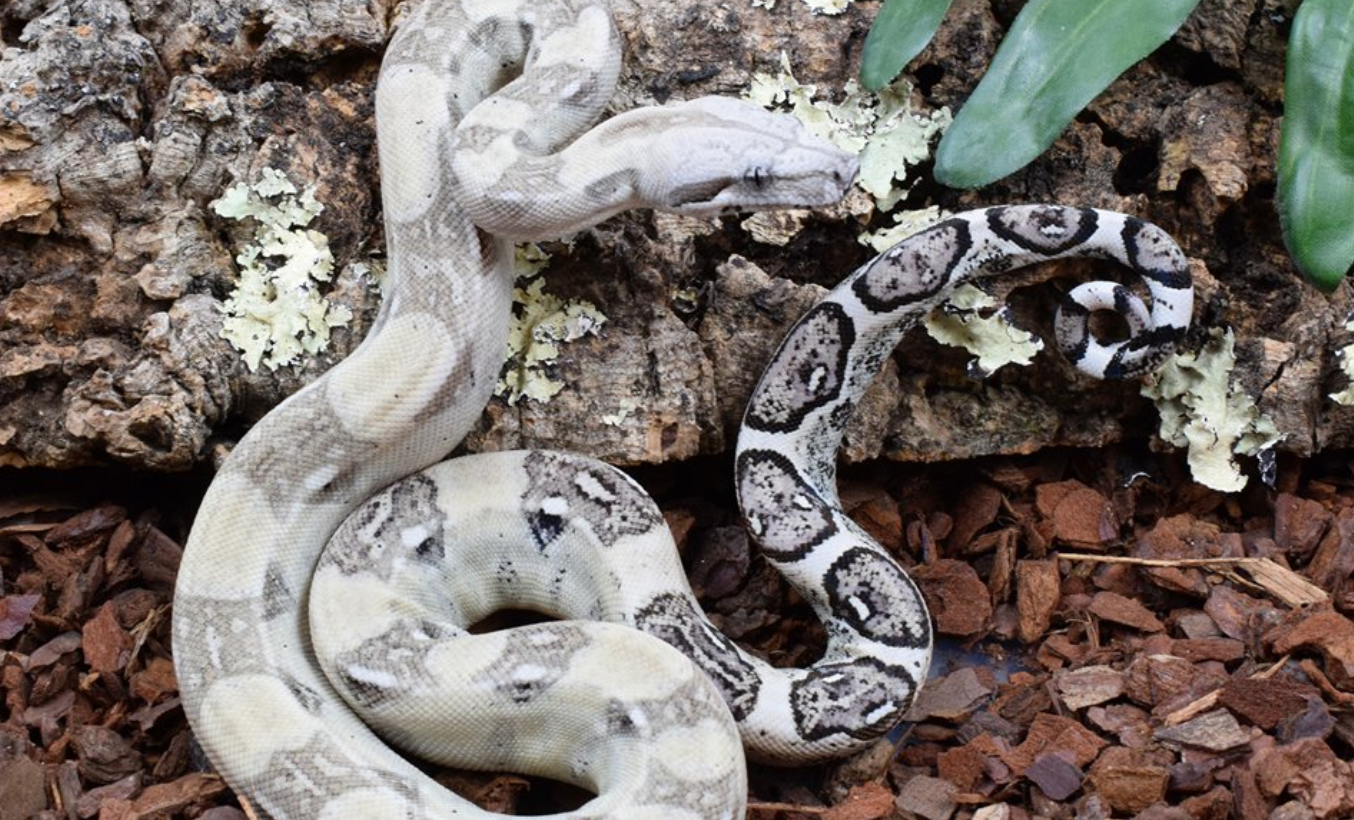
Boa Constrictor Anery het VPI male
The Boa Constrictor is without question one of the most popular snakes being kept by snake lovers today. Once considered to be a rare and exotic pet, boas are now being bred in large numbers, both by hobbyists and commercial breeders. The increased availability, combined with an ever-increasing palette of selectivity bred colors and pattern anomalies, has catapulted the “common boa” into stardom among reptile keepers. The boa constrictor is a large snake, although it is only modestly sized in comparison to other large snakes, such as the reticulated python and Burmese python, and can reach lengths from 3–13 ft depending on the locality and the availability of suitable prey. Clear sexual dimorphism is seen in the species, with females being larger in both length and girth than males.
The usual size of mature female boas is between 7 and 10 feet, and males between 6 and 8 feet. Boas are very long-lived reptiles. There are documented cases of captive boas living longer than 40 years; however, the average captive life span is 20 to 30 years. Please consider this carefully before bringing a boa home. Depending on the subspecies, Boas can be found through Central America to South America and many islands along the coasts of Mexico and Central and South America. Boas generally live on their own, and do not interact with any other snakes unless they want to mate. They are nocturnal, but they may bask during the day when night-time temperatures are too low. As semi-arboreal snakes, young boa constrictors may climb into trees and shrubs to forage; however, they become mostly terrestrial as they become older and heavier.

Boa Constrictor IMG het VPI female
Feeding
It is very important to allow your new boa to acclimate to its new surroundings before feeding. Never attempt to feed a new boa for at least five days after you bring it home. I assure you your new boa will be fine without food during this time. If you feed it too soon, while it may still be stressed from the move to your home, the snake may regurgitate. If this occurs, be sure your temperatures are correct, and do not attempt to feed the boa again for two weeks. The most common causes of regurgitation are improper temperature and stress from being handled, so be sure you provide proper cage temperatures and do not excessively handle boas after meals. Never feed a new boa a meal that is larger than the snake’s mid-body girth. It should never exhibit a bulge after eating. Especially in young boas, a meal that is too large may lead to regurgitation.
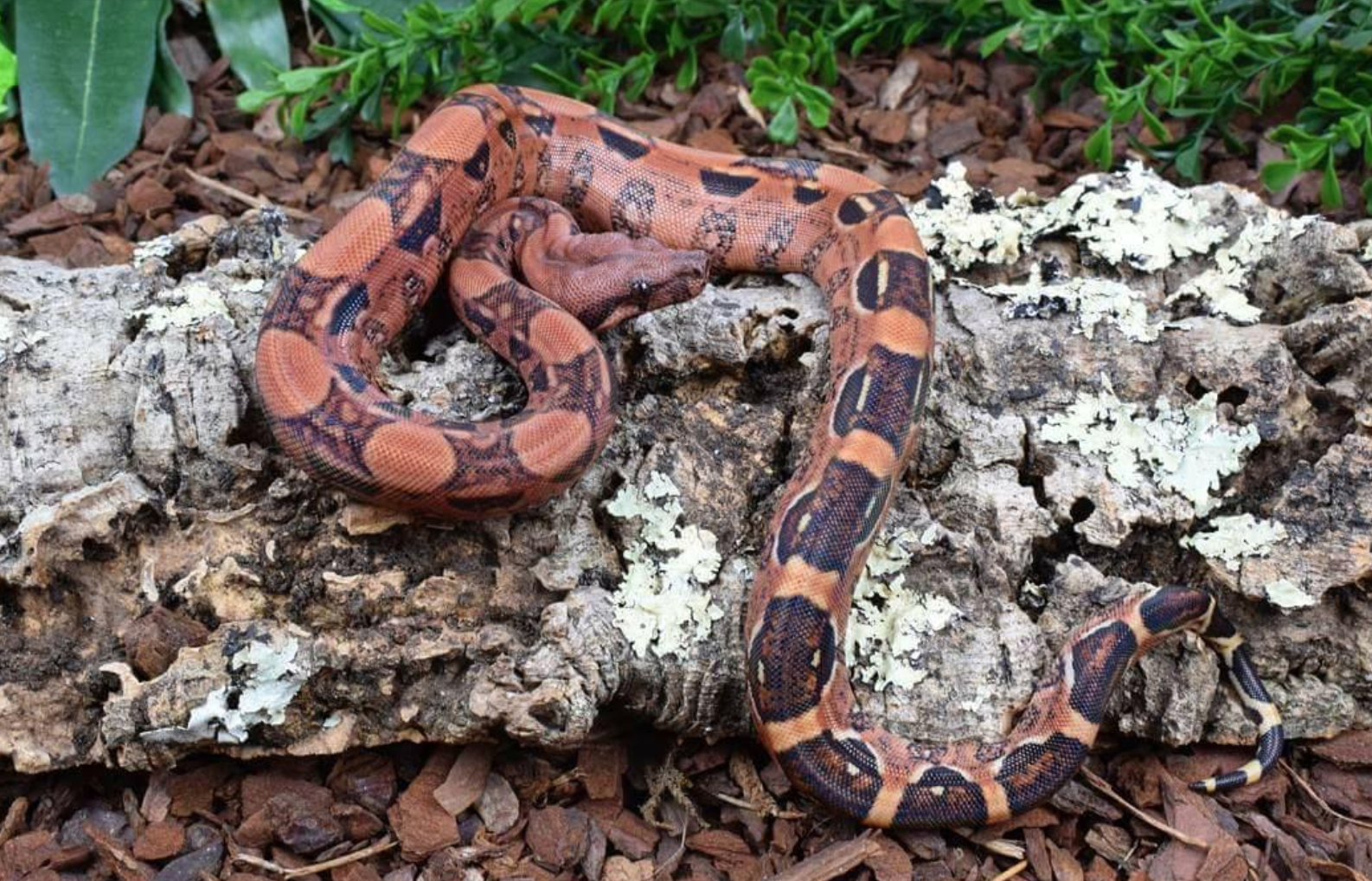
Boa Constrictor Blood het Albino female
An established boa will handle a meal resulting in a small bulge just fine. Pet boa constrictors should be fed only quality mice or rats. They need no additional food or supplementation. Be sure you buy your rodents from a good source to prevent disease and mites. Boas 2 years old and younger should be fed one appropriately sized rodent every seven to 10 days. Excessive feeding may lead to regurgitation, improper growth, and even premature death. Once boas near adulthood, they will thrive while being fed every 10 to 14 days. Most boa constrictors available as pets will be eating frozen/thawed prey. If you purchase one that is eating live rodents, it will often take frozen/thawed prey that is presented from a pair of tongs. Pre-killed rodents are always best, whether they are frozen/thawed or freshly killed, because live rodents may harm your boa. If your snake does not kill its prey (boas will not eat if they are not hungry or are kept under improper conditions), the rodent may bite or even kill your boa. Even if the boa does constrict its prey, the rodent may bite before it is killed. Never leave your boa unattended with live rodents.
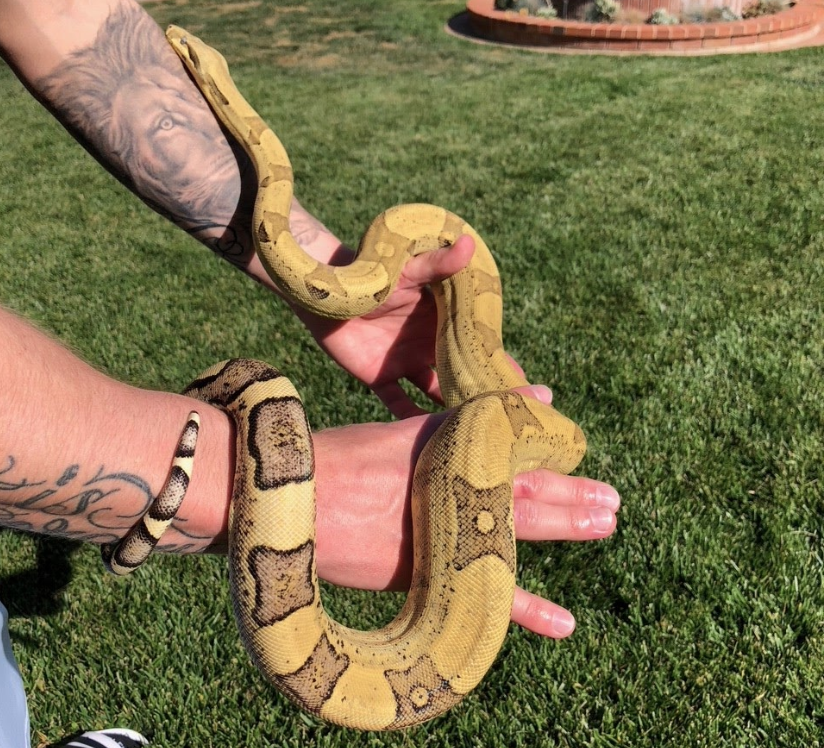
Boa Constrictor Anery Jungle VPI female
Water, Humidity and Shedding
A water bowl is a necessity. This allows your boa a place to drink and helps provide the proper humidity for your boa. The humidity in the cage should be 60 to 70 percent; use a hygrometer (humidity gauge) to track the percentage. Water must always be clean and should be changed as needed and the bowl cleaned. Some boa constrictors will defecate or urinate in the water, which must be cleaned immediately if this occurs. Be sure to scrub and rinse the bowl, using an antibacterial dish soap and hot water. Be sure to rinse thoroughly, and run the water bowl through your dishwasher monthly if possible. Disposable forms of water bowls, such as deli cups, are another option. Young boas will often soak before or during a shed cycle. This aids in shedding their skin, but usually occurs only when proper cage humidity is not being met. A boa that is constantly in the water bowl usually indicates the humidity is too low, the temperature is too high, or the boa has mites. After a shed, be sure to check the tip of your boa’s tail.
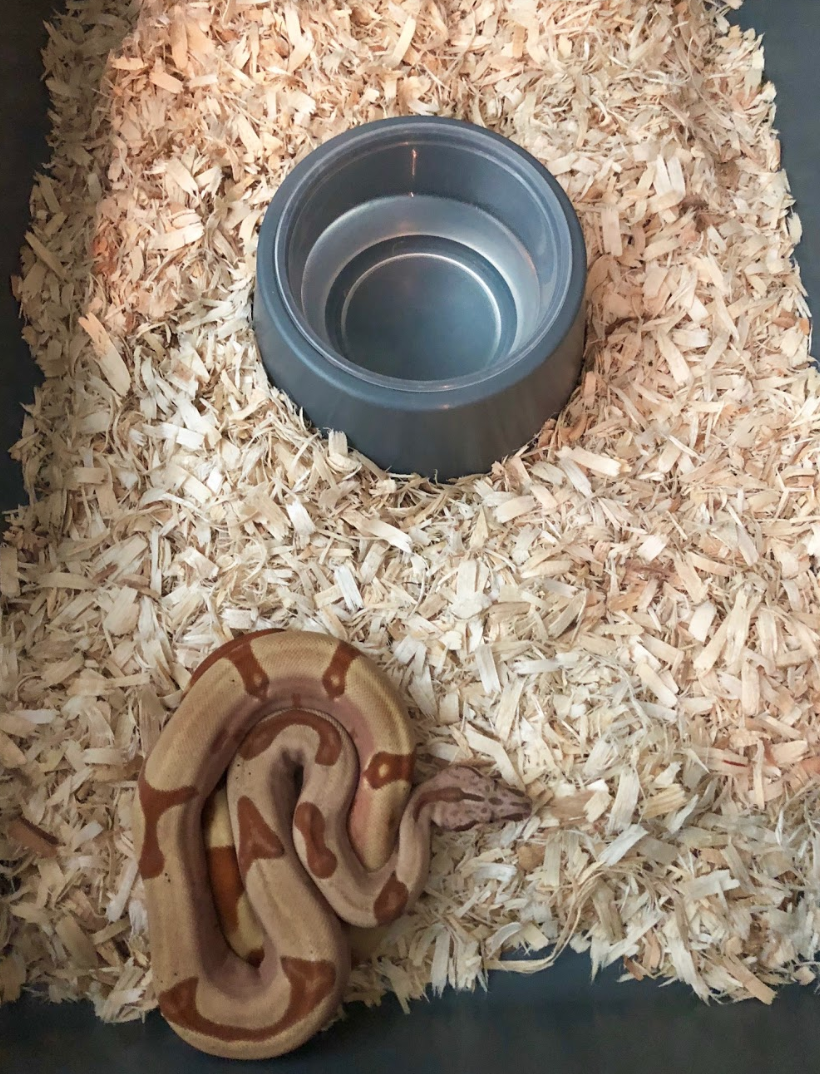
Boa Constrictor Summit Pastel Salmon Jungle Pink Panther het VPI Female
Young boas will sometimes retain a small piece of shed skin there. If caught soon after the shed, this old skin is usually easy to remove by gently pulling the skin off. Always be careful when attempting this. If it’s sticking, usually a dip in warm water will make removal easy. This skin retention does not necessarily mean you have husbandry issues. Sometimes the skin simply tears before the shed is removed completely. If you notice retained skin on other areas of your boa’s body, you may need to adjust the humidity levels. Shedding issues are usually a result of insufficient humidity. A soak or two during the shed cycle will greatly help if you are experiencing low-humidity issues. Place a quarter-inch of warm water in an appropriately sized plastic container, and place your boa inside with a secure lid in place. Then place the container in your boa’s cage, positioned so the inside of the container has a warm side and cool side. This will keep the water warm and the humidity high. Do not place it directly over the belly heat or under a basking bulb. A few holes in the lid or sides of the container will provide ventilation. Soak your boa in the container for up to an hour (two hours if you’re combating a particularly tough shed) and repeat as necessary. Be sure to check on your boa regularly, as they will often defecate while soaking. Change the water and clean the container if this occurs. At end of the shed cycle, remove the water and place a small towel in the container so your boa can rub on it to help shed its old skin.
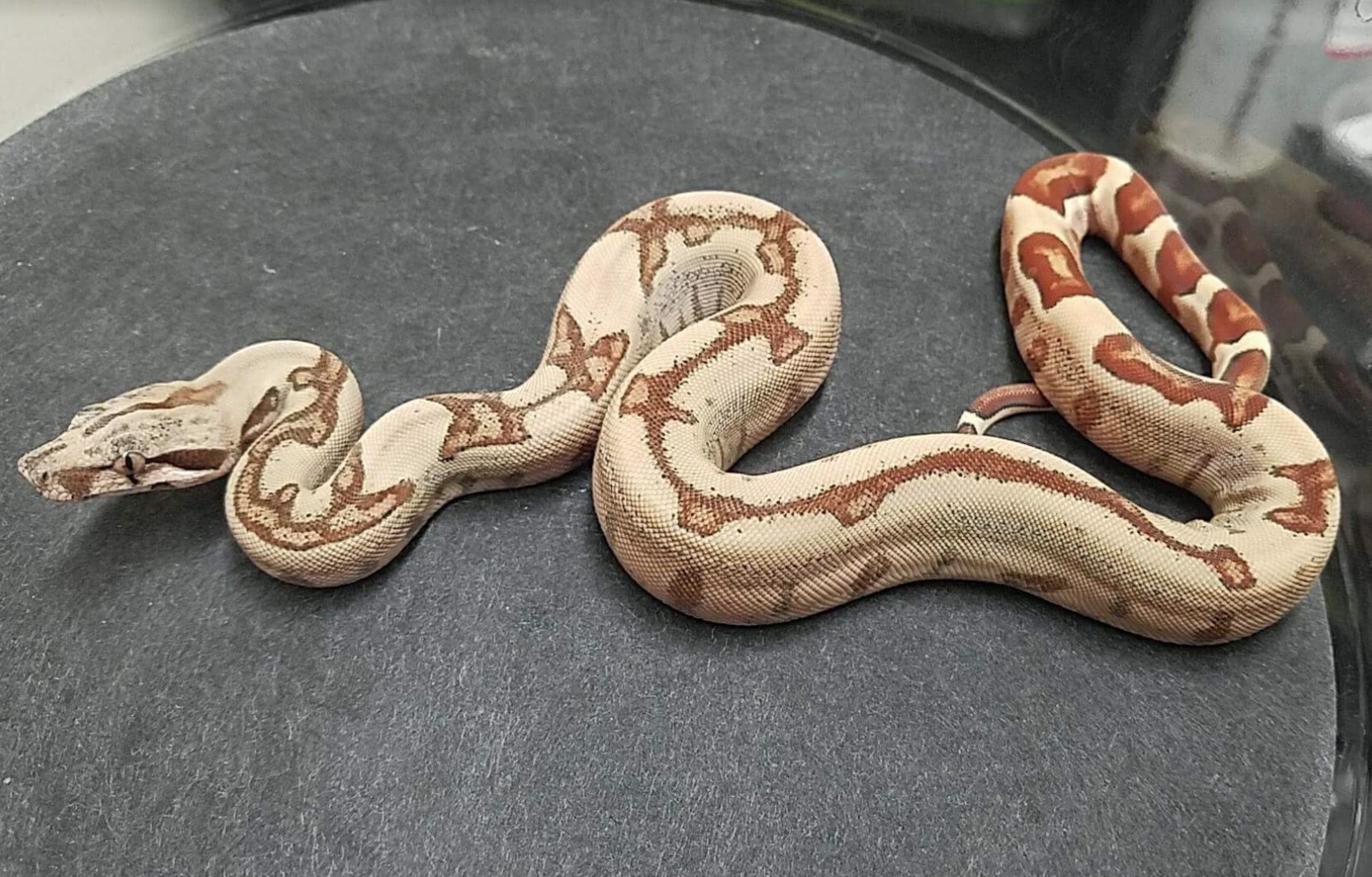
Boa Constrictor Hypo Jungle Double Het Blood Albino male
Caging/Rack Systems
Many caging options are available for boas. Aquariums can be used, but reptile-specific plastic enclosures made from high-quality plastics that maintain proper humidity are much more suitable for boas than anything else. A rack system is something to consider should you advance into breeding boas, or if you plan to have many boas living with you. Custom enclosures are another option. Young boas have simple needs; a large, beautifully decorated cage is not the best choice for them. While a new boa is acclimating, simple housing is preferred, and the enclosure should be prepared prior to your new boa’s arrival home. An appropriate first cage for a baby boa would be no larger than 30 inches long by 12 inches wide, in which it will feel very secure. Naturally, as the young boa grows, a larger cage will be required. Boas are terrestrial and floor space is more important than height.
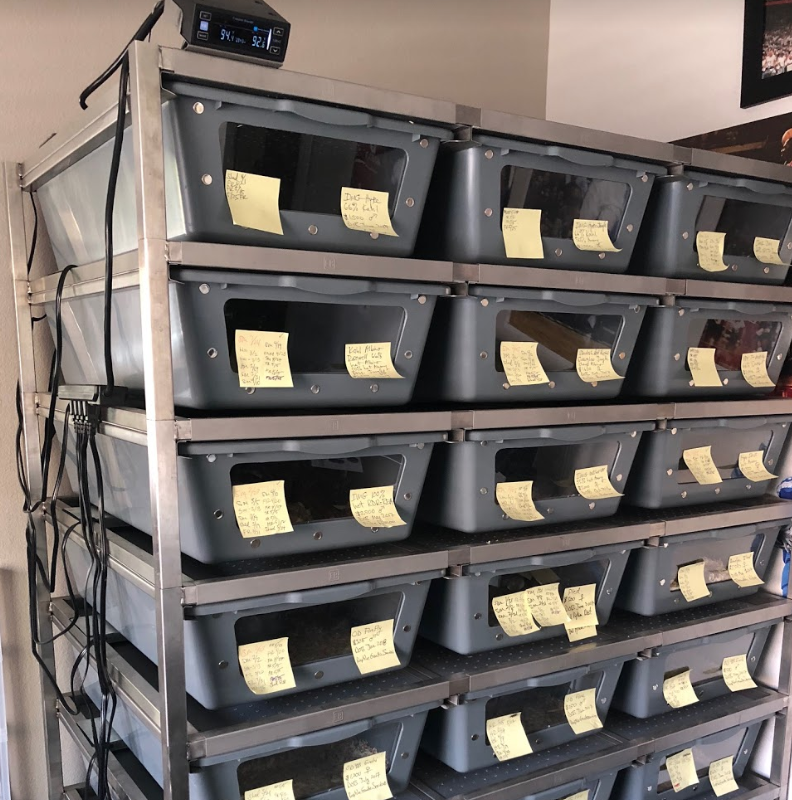
Freedom Breeder Rack System
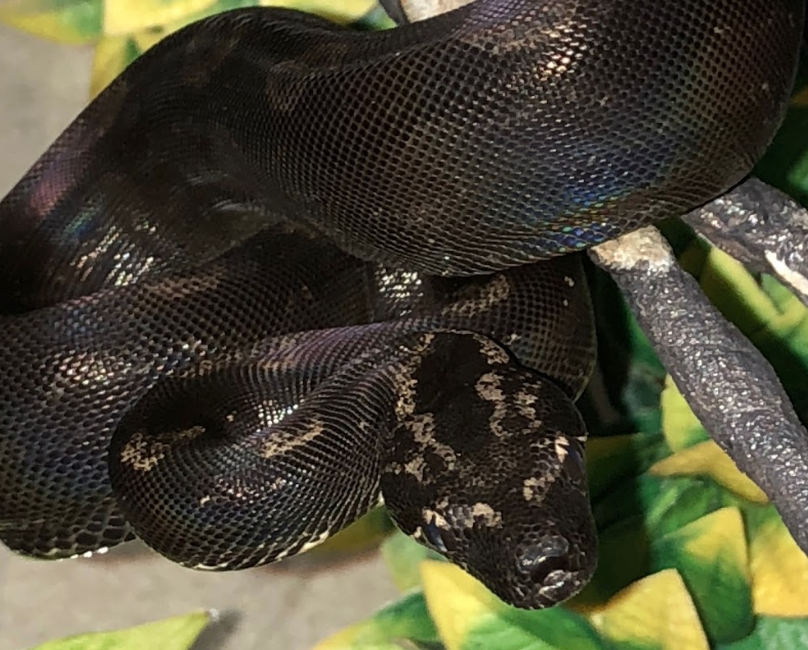
Boa Constrictor IMG Sharp male
Young boas may climb, but do so much less as they grow. Typical full-grown adult boas should be housed in cages no smaller than 4 feet long by 2 feet wide (with larger-than-average snakes in larger enclosures). A hide box/shelter should be provided, which will allow the boa to feel safe and secure. There are many commercially manufactured types available. Offer two hides, one on the warm side of the enclosure and one on the cool side. A stressed baby boa may stay on one side of the cage if only one hide is provided, which may discourage the snake from thermoregulating properly. You may also provide rocks, sticks or other structures, but be sure they are positioned securely and free of parasites.
Temperature
Boas control their body temperature through thermoregulation, and the cage should have a warm side and a cool side. This is very important! Do not place the heat source in the center of the cage, place it at one end. Then if the boa gets too warm, it will move toward the cooler side, and if it is too cool, it will move to the warmer side. That’s thermoregulation! The temperatures in the cool end your boa cage should not drop below 75 degrees Fahrenheit. The warm side should be 85 degrees, with a hot spot of 90 degrees provided by an under-cage heating device that will provide “belly heat.” Boa constrictors greatly prefer this, so they can coil over the rising heat. Belly heat can be provided using various devices. Under-tank heaters are the most readily available. Heat cable and heat tape are other possibilities. Any heating device should be controlled with a proportional thermostat or rheostat.
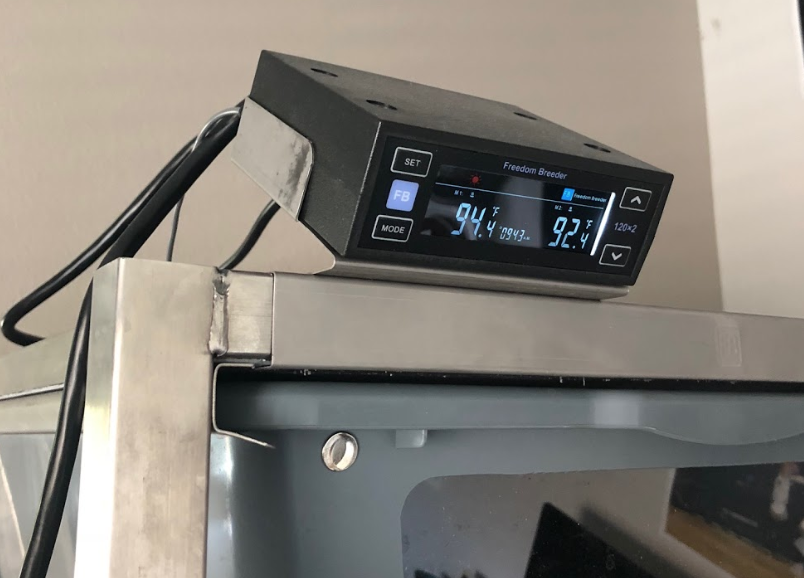
Thermostat
Some heat sources, especially heat tape, can get too hot for some enclosures, and they must be regulated not just for the boa’s safety, but yours, too. If using these devices, especially if you’re using a glass enclosure such as an aquarium, be sure some ventilation is provided around the heat source. If heat builds up, it can crack the bottom of a glass tank, or cause other caging materials to melt or overheat. Overhead lighting is not usually needed. If an overhead bulb is used, it should be placed directly over the source of the belly heat. Be sure to check the temperature of your hot spot while the bulb is on. If the belly heat being provided from the under-enclosure device is not warm enough, overhead lighting will assist in maintaining a proper hot spot, but overhead lighting or an overhead heating device alone is not recommended for boas. A low-wattage fluorescent bulb can be used to provide a photoperiod (day/night cycle) and to better observe your boa. Full-spectrum bulbs with UVB may provide physical and physiological benefits to boas, but this has not been proven. UVB lighting is not needed for the proper care of boas, and the vast majority of boa keepers do not use it. Still, it won’t harm your boa, so feel free to provide it just in case there is some benefit.
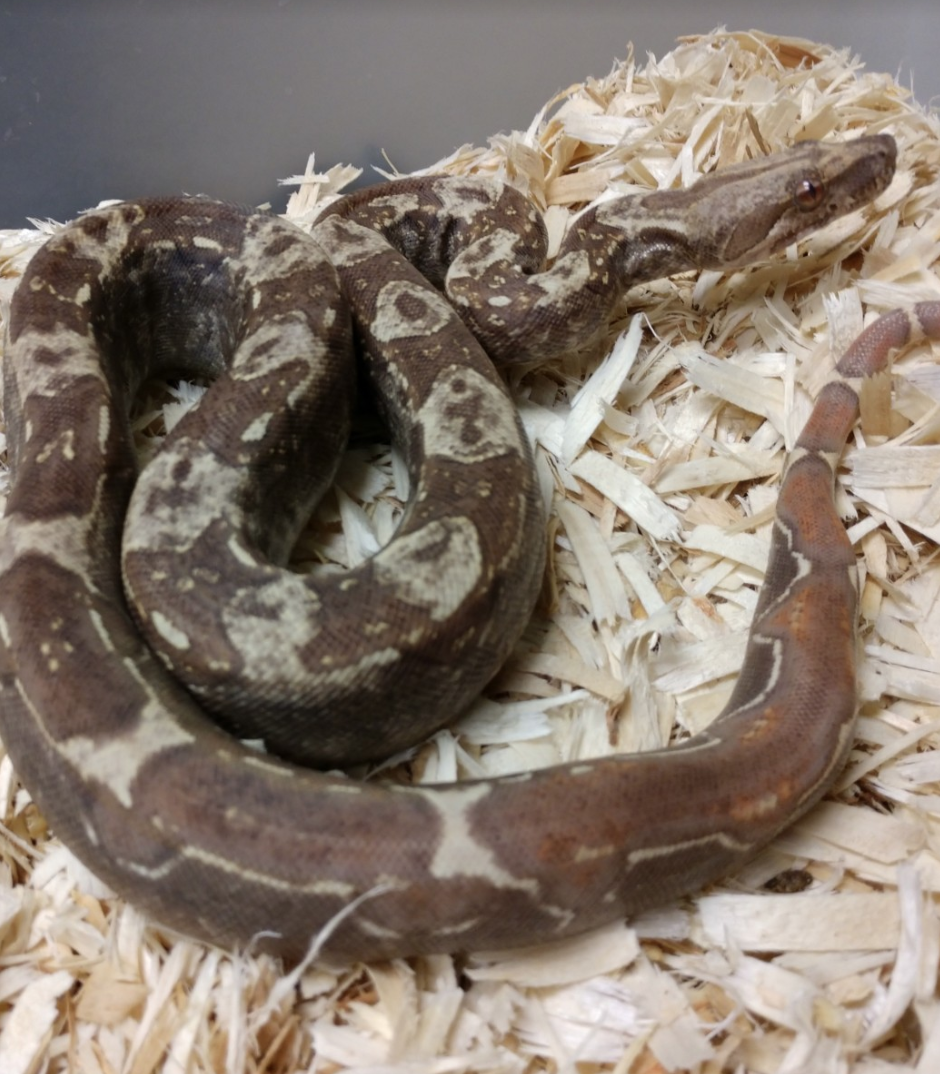
Boa Constrictor IMG VPI Female
Floor Substrate
Boas can be kept on several types of substrate. Newspaper, aspen, white or brown butcher/wrapping paper, and cage carpet are the most often used substrates. Fir and cypress barks are also acceptable but not often used by breeders. If using cypress bark or mulch, be sure it does not become too damp as it holds humidity very well. When using aspen or carpet, the cage can be spot cleaned often, with a full change occurring as needed. If using paper, the entire substrate should be changed each time cage cleaning occurs.
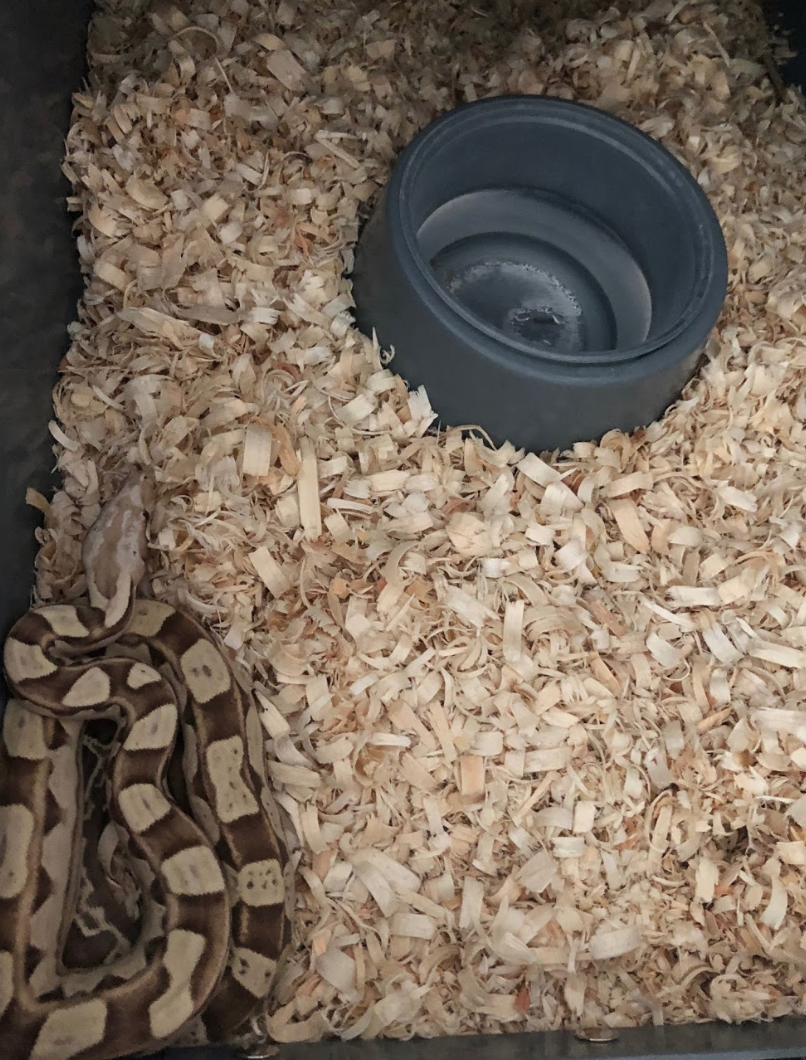
Boa Constrictor VPI T+ Motley Snow female Floor Substrate Aspen
Reproduction
During the breeding season (November-April), the female boa emits a scent from her cloaca to attract males. While breeding, the male curls his tail around the female’s and the hemipenes are inserted. Copulation can last from a few minutes to several hours, and may occur several times over a few-week period. After this period, ovulation may not occur immediately, but the female can hold the sperm inside her for up to one year. When the female ovulates, a midbody swell can be noticed that appears similar to the snake having eaten a large meal. The female then sheds two to three weeks after ovulation, in what is known as a post-ovulation shed which lasts another 2–3 weeks, which is longer than a normal shed. The gestation period, which is counted from the post-ovulation shed, is around 100–120 days. The female then gives birth to a litter size that varies, but can be between 10 and 65 young, with an average of 25.
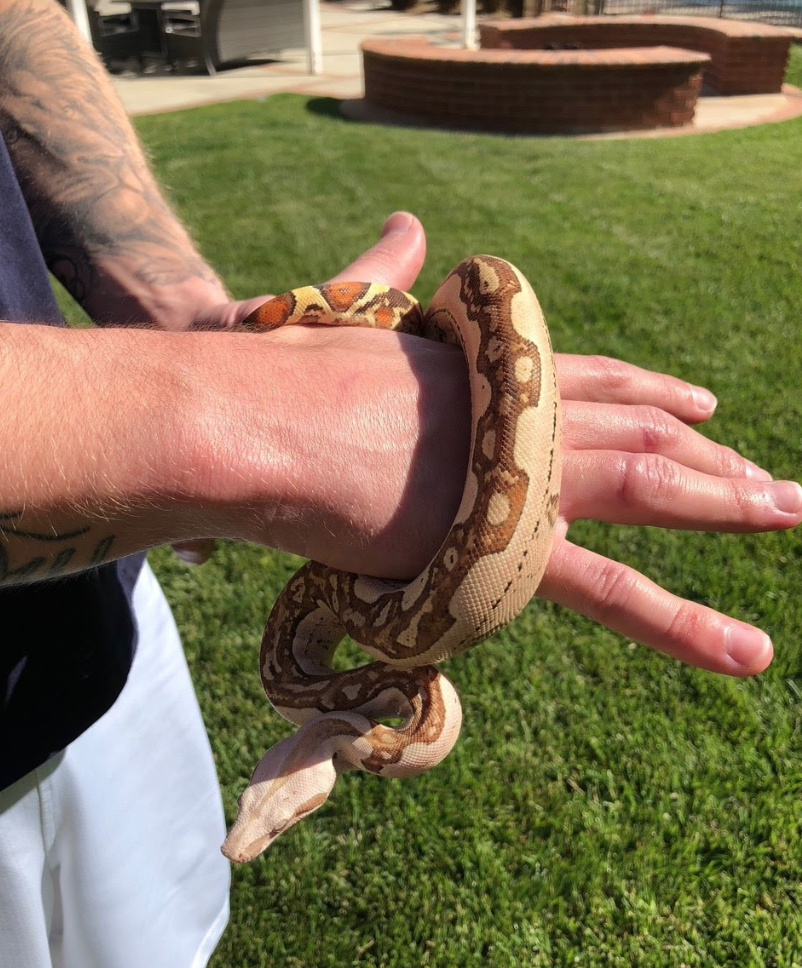
Boa Constrictor VPI T+ Jungle Red Panther female
Handling Boas
Boa constrictors are usually very docile and tolerate handling very well. They often seem to enjoy being held and will seek out an area on your arm or shoulders and enjoy your body warmth. They may crawl around for a few minutes before hunkering down to grab some heat. If your boa seems to have a bad attitude, check its enclosure temperatures, humidity levels and overall husbandry. Most boas calm quickly after repeated sessions of being handled. The boa constrictor makes a great pet for reptile hobbyists of all levels, and it remains a cornerstone in the reptile community. Personally, I believe boa constrictors are as good as it gets in the snake world.
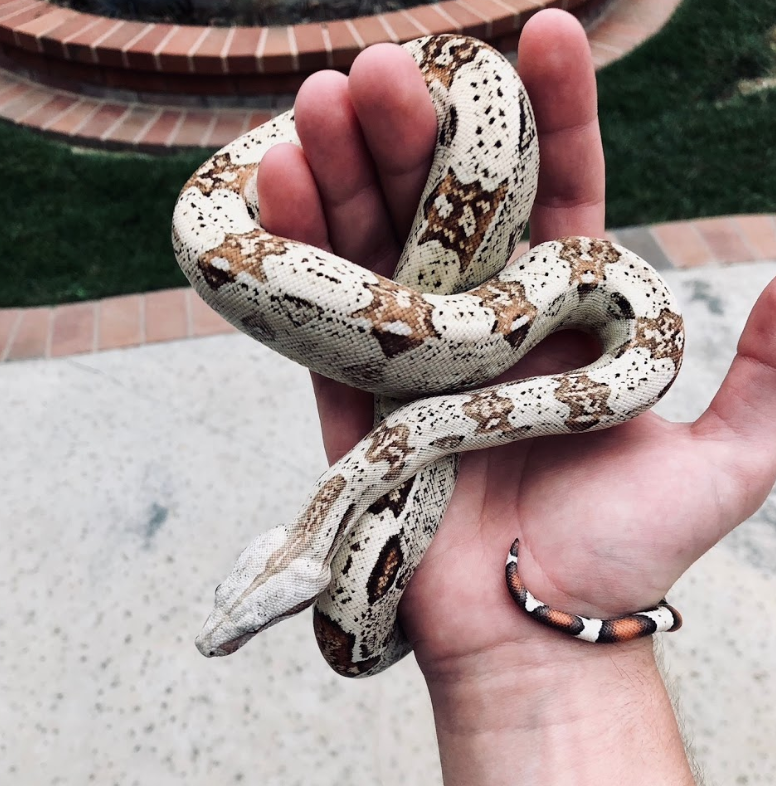
Boa Constrictor het Anery VPI T+ Pink Panther Female
Learn about Ball Pythons
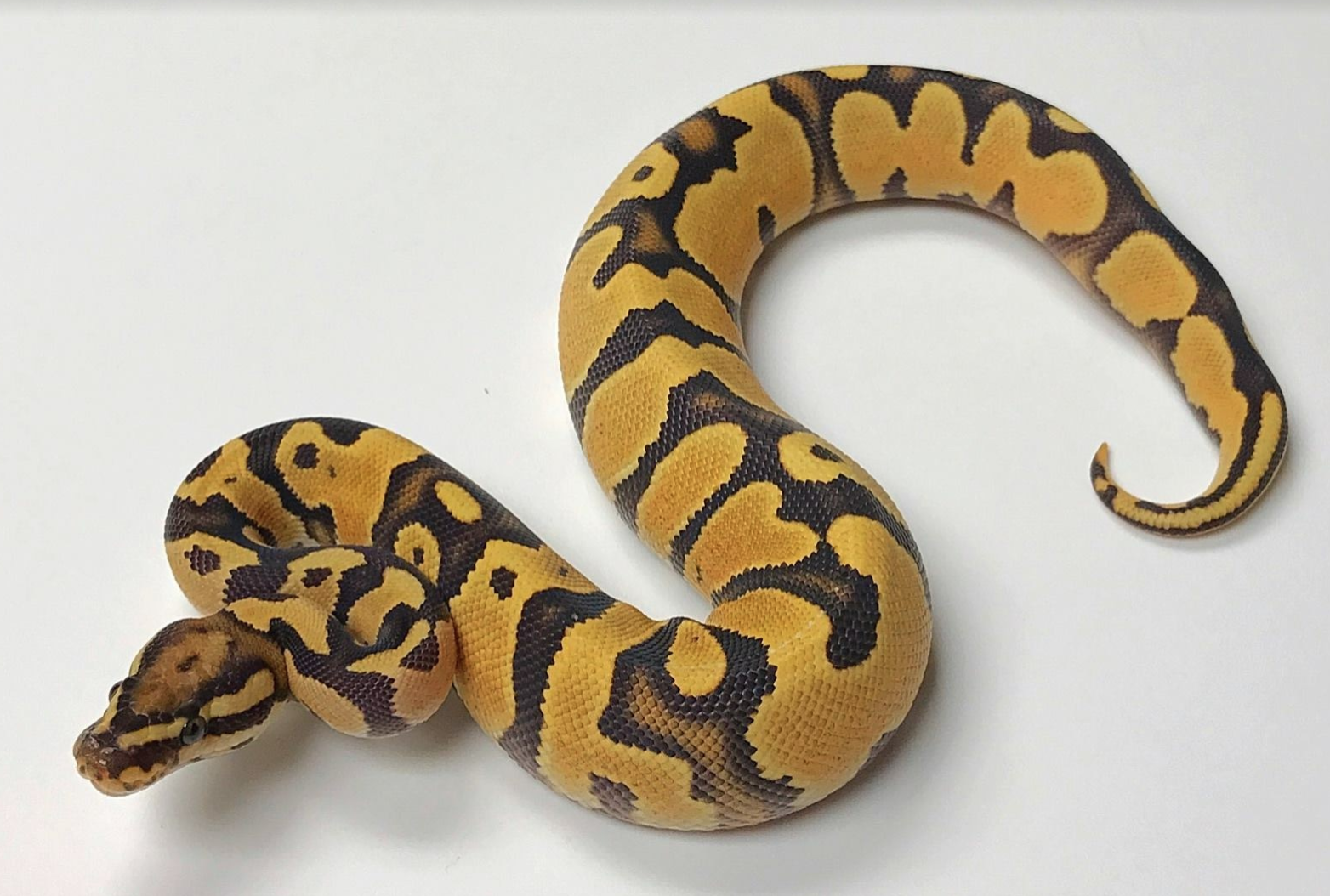
Ball Python female Orange Dream Yellow Belly Fire
The Ball Python is quite simply the most popular pet python in the world. Ball pythons are generally a bit shy, but they make for ideal captives, because they are of a small size, are generally friendly, are easy to care for, and come in a remarkable array of colors and patterns.
Ball pythons are native to central and western Africa and thrive in these warm, tropical areas. They are known as the royal python in many parts of the world and are revered in some areas of Africa.
Ball pythons make for a quality pet for the first-time keeper and experienced herpetoculturists alike. Each year, breeders create incredible, innovative, never-before-seen pattern and color variations that continually generate new fans of the ball python.
Ball python hatchlings are approximately 10 inches in length. Adult female ball pythons average 3 to 5 feet long, and adult male ball pythons average 2 to 3 feet in size. This is a species in which mature females are typically much larger than the males. A 5-foot ball python is considered big, although lengths of 6 feet or more have been reported. With proper care, ball pythons can live 30 years or more. The record age for a ball python is more than 40 years – so plan on a long life for your new pet snake.
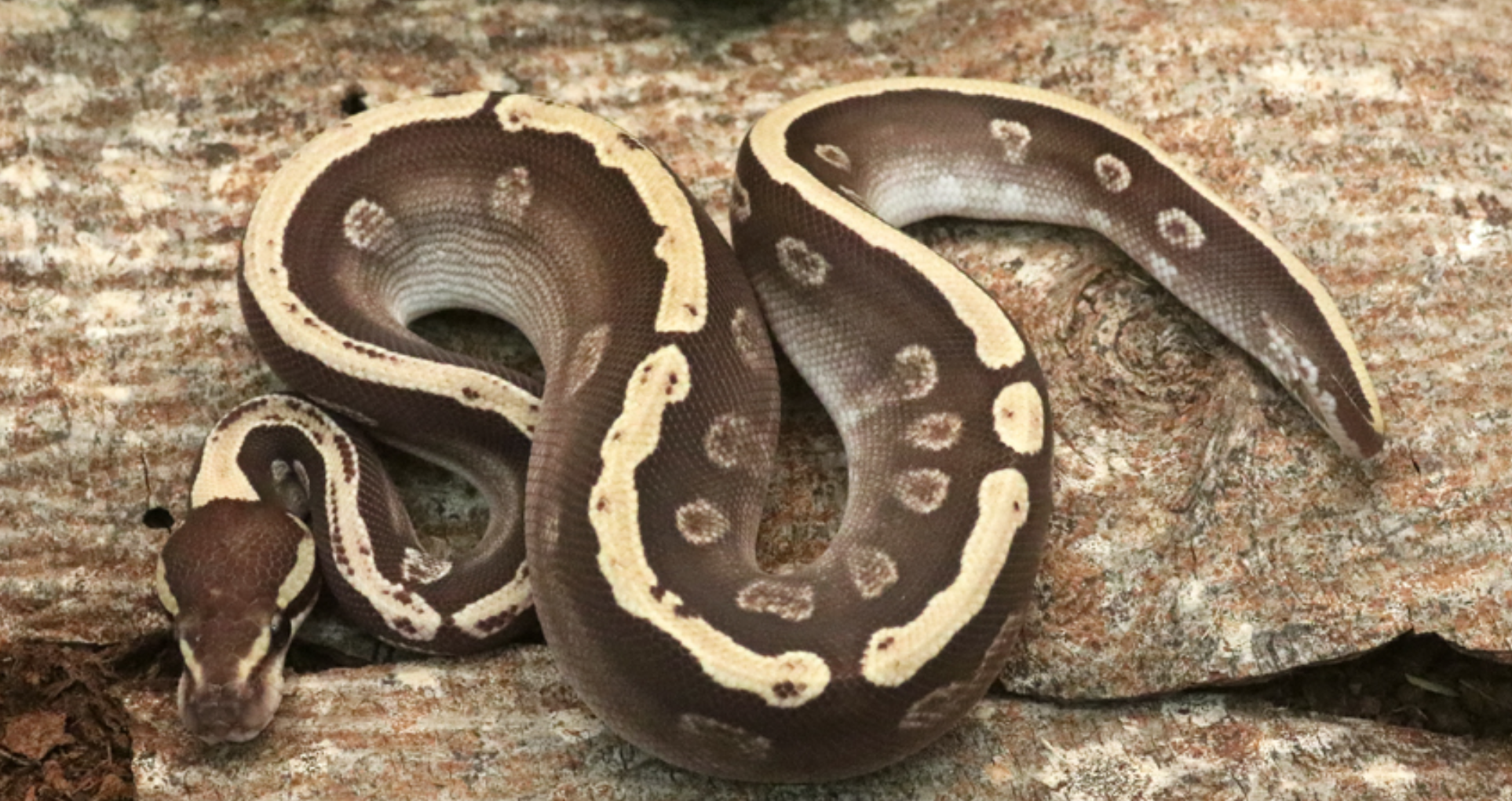
Ball Python male GHI Mojave Harly
Caging/Rack Systems
Ball python enclosures can be as simple or as elaborate as you want to care for. Remember that the more you put in the cage, the more you have to clean and disinfect on a regular basis. That said, there are different enclosures that work well for ball pythons, including, but not limited to, plastic tubs or melamine racks. At our facility, we use Freedom Breeder rack systems (see image). Glass aquariums and tanks are adequate for ball pythons, but the screen tops on such enclosures can make it very difficult to maintain proper humidity levels. Juvenile ball pythons seem to do well in small enclosures that make them feel secure. A small snake in a big cage can become overwhelmed and stressed. Adult ball pythons do not require exceptionally large or elaborate enclosures either. A 36-inch by 18-inch by 12-inch enclosure will more than comfortably house an adult ball python. The one cage accessory that is required for a happy ball python is a good hide box. Ball pythons are secretive snakes that appreciate and utilize hide spots. Provide one on each end of your python’s enclosure so that it doesn’t have to choose between temperature and security.

Freedom Breeder Rack System
Temperature
Remember that enclosures must allow for a proper thermal gradient that the ball python can utilize, with a hotspot on one end of the enclosure and a cool spot on the other. Provide your ball python with a basking spot temperature of 88 to 96 degrees Fahrenheit and an ambient temperature of 78 to 80 degrees. The ambient temperature should not fall below 75 degrees. Ball pythons seem to prefer humidity levels of 50 to 60 percent. Maintaining proper humidity will allow your ball python to shed properly.

Thermostat
Floor Substrate
Newspapers and paper towels are the cheapest and easiest substrates for ball pythons with regards to cleaning and disinfecting. Aspen, cypress mulch and orchid bark are great substrates for controlling humidity, but remember that too much humidity can be as detrimental (if not more) as too little. Avoid sand, shavings and peat bedding.
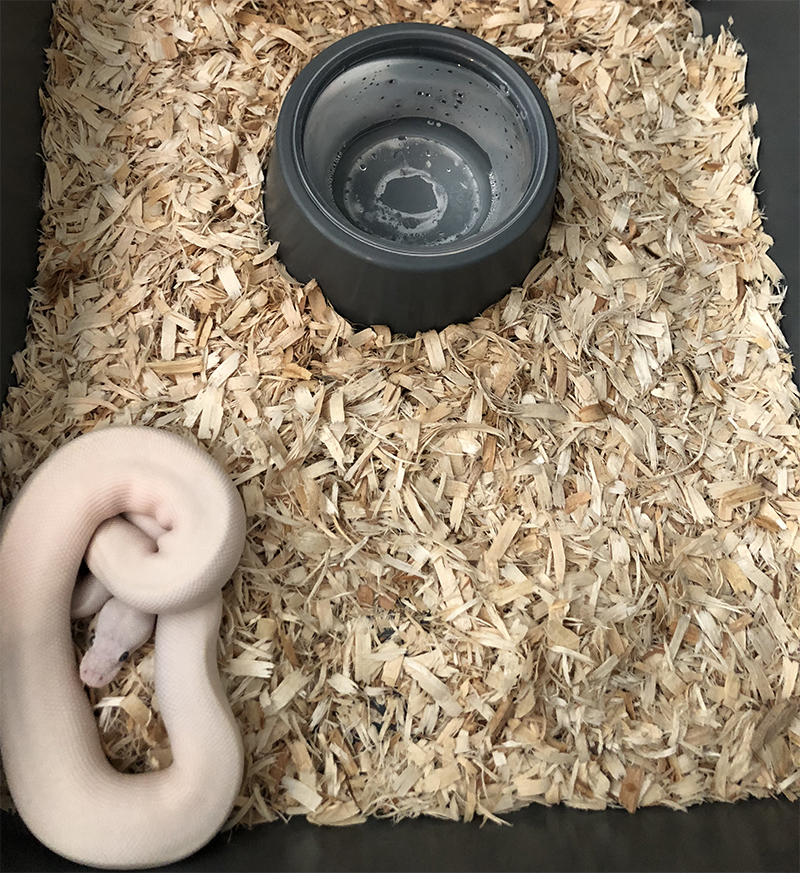
Ball Python male BEL Blue Eyed Leucistic Mojave Lesser
Feeding
Feed your ball python an appropriately sized rodent weekly. “Appropriately sized” means prey items that are no bigger in circumference than the ball python at its largest circumference. Ball pythons can eat rats from the time they are young – starting off with rat pups or “crawlers” at first and moving up in size as they grow. Do not handle your ball python for at least a day after feeding, as this can lead to regurgitation. Ball pythons can be fed frozen/thawed or pre-killed rodents. Never leave a live rodent unattended with any snake, as they can injure the snake.
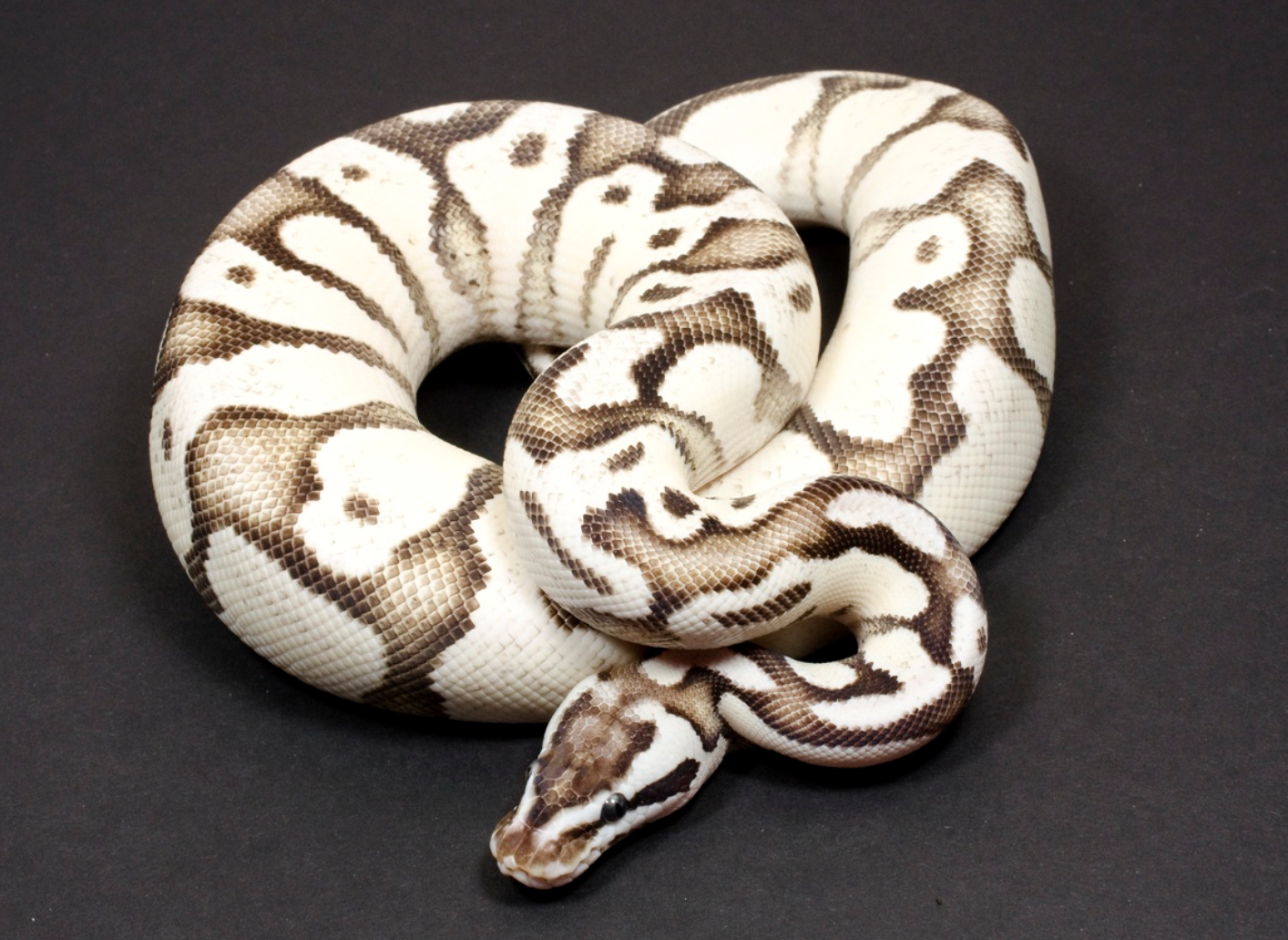
Ball Python male Firefly Enchi SK Axanthic
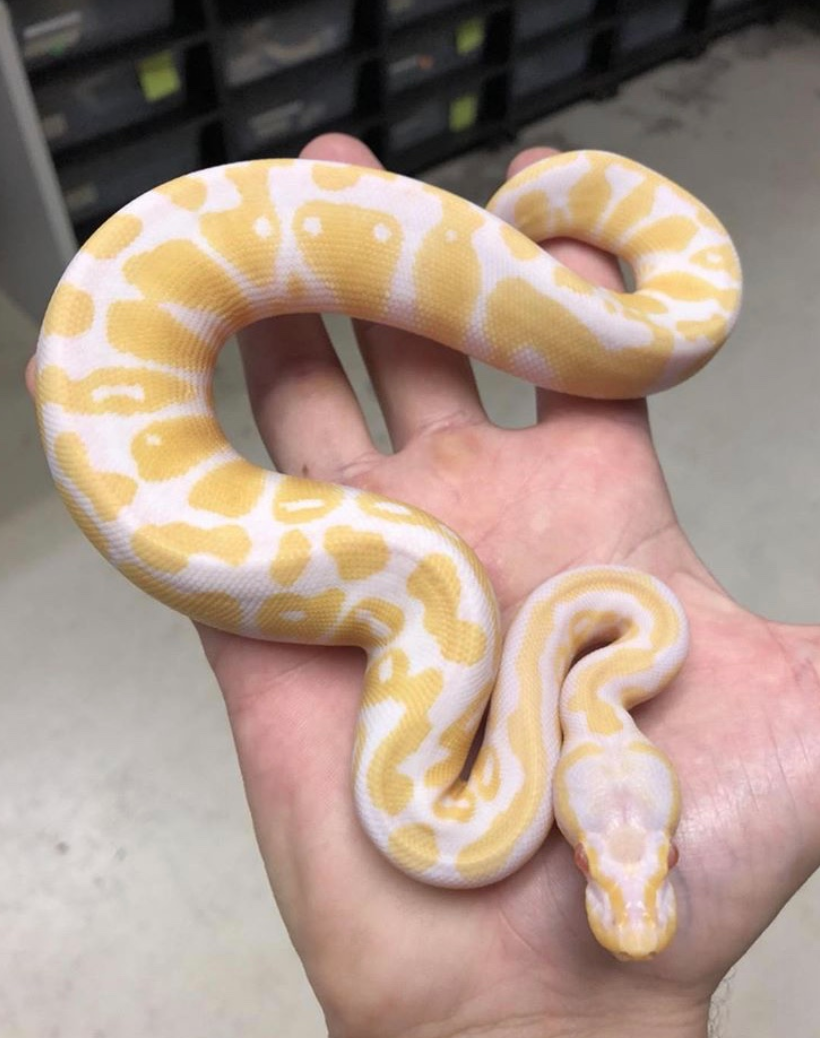
Ball Python female Albino Black Pastel
Ball pythons are well-known for not eating at certain times throughout the year, particularly in the winter months. Be prepared for the possibility of your ball python going off feed, and keep an observant eye on the snake’s overall condition and body weight. This is typically nothing to worry about with healthy, well-established pythons, although it can be extremely frustrating to the snake keeper. If your ball python is healthy, continue your husbandry routine as usual, but keep the amount of handling to a minimum. Offer your ball python food every 10 to 14 days until it is interested in eating again, as the snake will eventually resume feeding normally.Feed adult ball pythons every 1 to 2 weeks and younger ball pythons weekly as they need this energy to grow. Do not be alarmed if a well-started ball python goes off feed during the cooler, drier times of the year, as this is common in captivity. Snakes generally do not eat while they are in the shed cycle.
Water
Always have fresh, clean water available for your ball python. Check the water daily. The size of the water dish is up to you. If it is large enough for the ball python to crawl in to and soak, sooner or later your snake will make the most of the opportunity – ball pythons seem to enjoy a nice soak from time to time. Ensure that the water bowl is not too deep for juvenile animals – 1 inch or so will suffice. Snakes of many species will defecate in their water bowls from time to time, so be prepared to clean and disinfect the water bowl. The water bowl should be cleaned and disinfected on a weekly basis. Having a spare water bowl for such occasions can be handy, so that one may be used while the other is being cleaned.
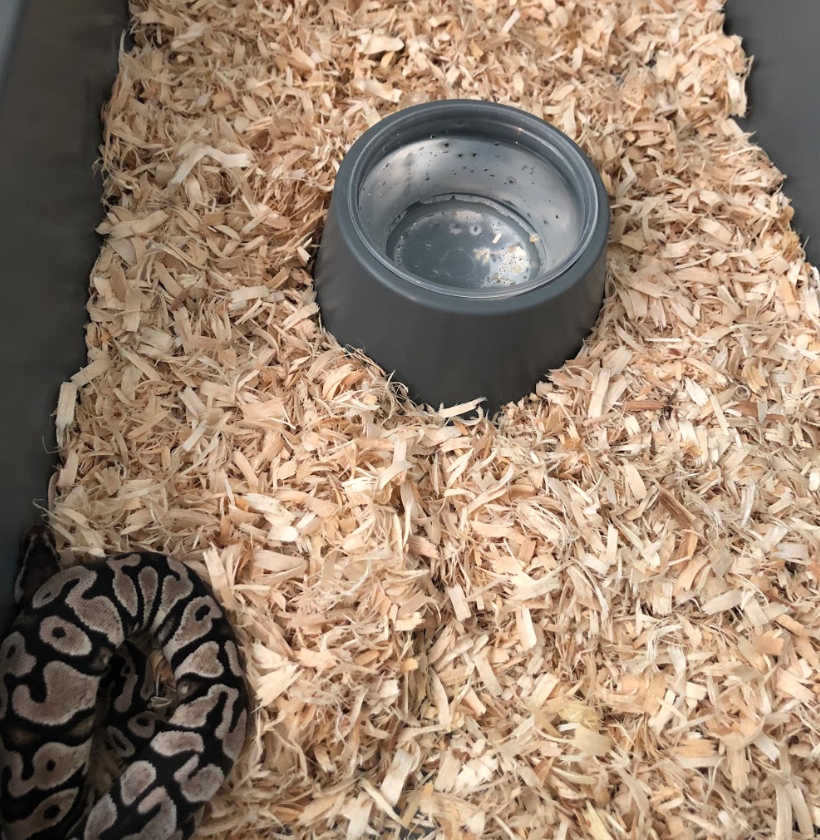
Ball Python male Pastel Yellow Belly SK Axanthic
Handling
Ball pythons are generally shy and will spend much of their time hiding. Your ball python may initially see you as a threat and it must learn who you are. The goal is to establish trust between you and your snake.
Always support your ball python’s body and avoid fast movements. Once a ball python realizes that you will not hurt it they often seem to enjoy being handled. Some ball pythons may try to hide when handled and occasionally there are ones that may even bite due to excessive fear. These ball pythons may require a bit more time to settle in and establish trust. A ball python’s bite is a superficial wound. If a snake looks like it is going to strike, it is best to not handle it. Relax when holding your animal – sit down and give the animal a chance to settle.
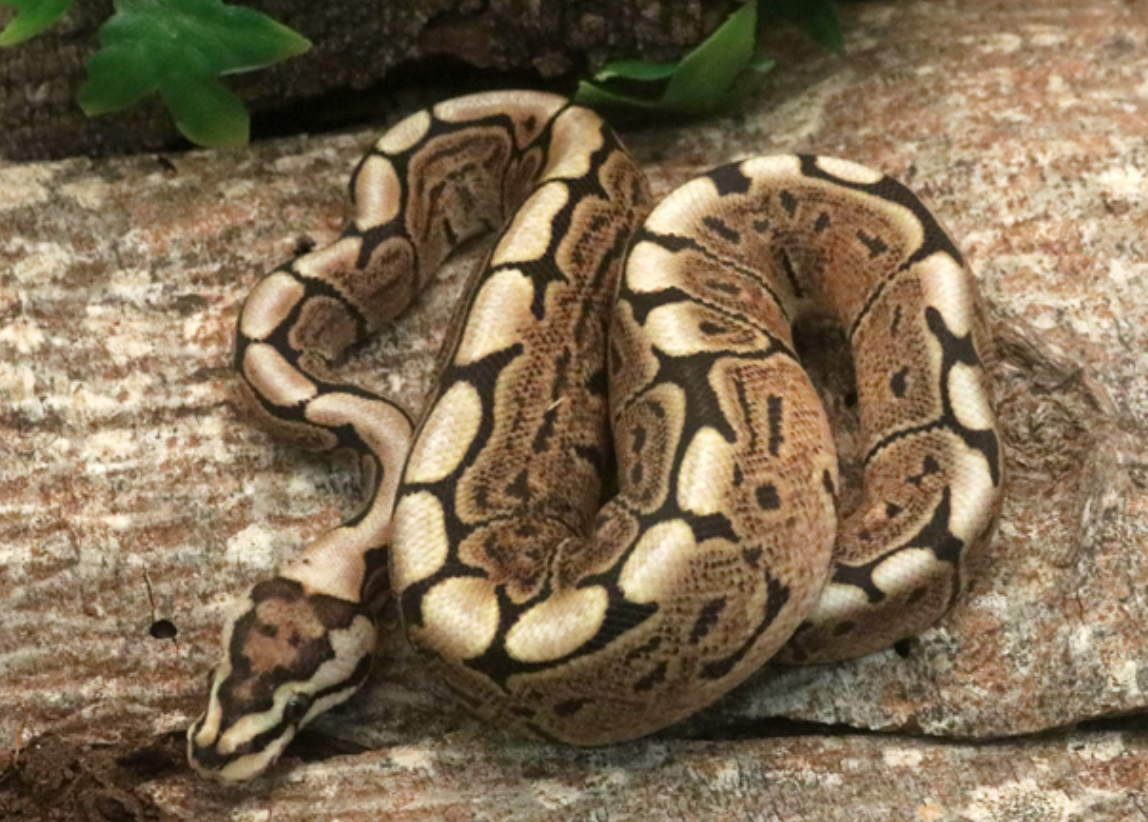
Ball Python female GHI Spider
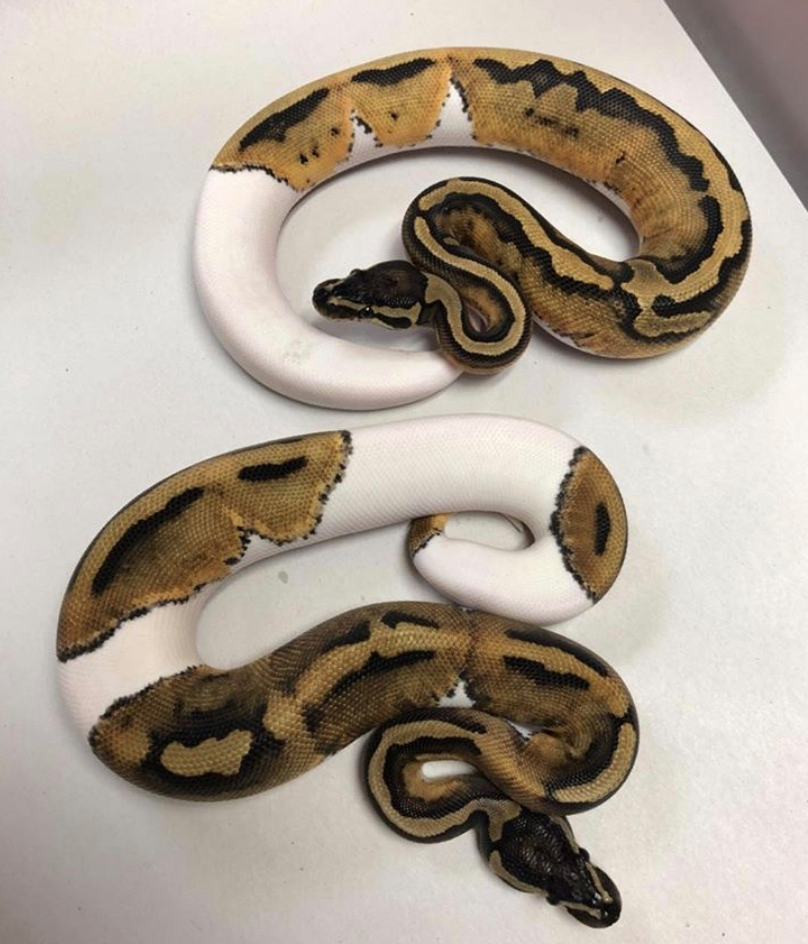
Ball Python females Pied
Some snakes may not eat for several hours or longer after being handled, so avoid handling if you plan to feed. After a snake has eaten it may be a good idea to limit the handling because it may be uncomfortable for the animal. Avoid putting your snake’s cage in a heavy traffic area, excessive movement, and other pets should be avoided.

